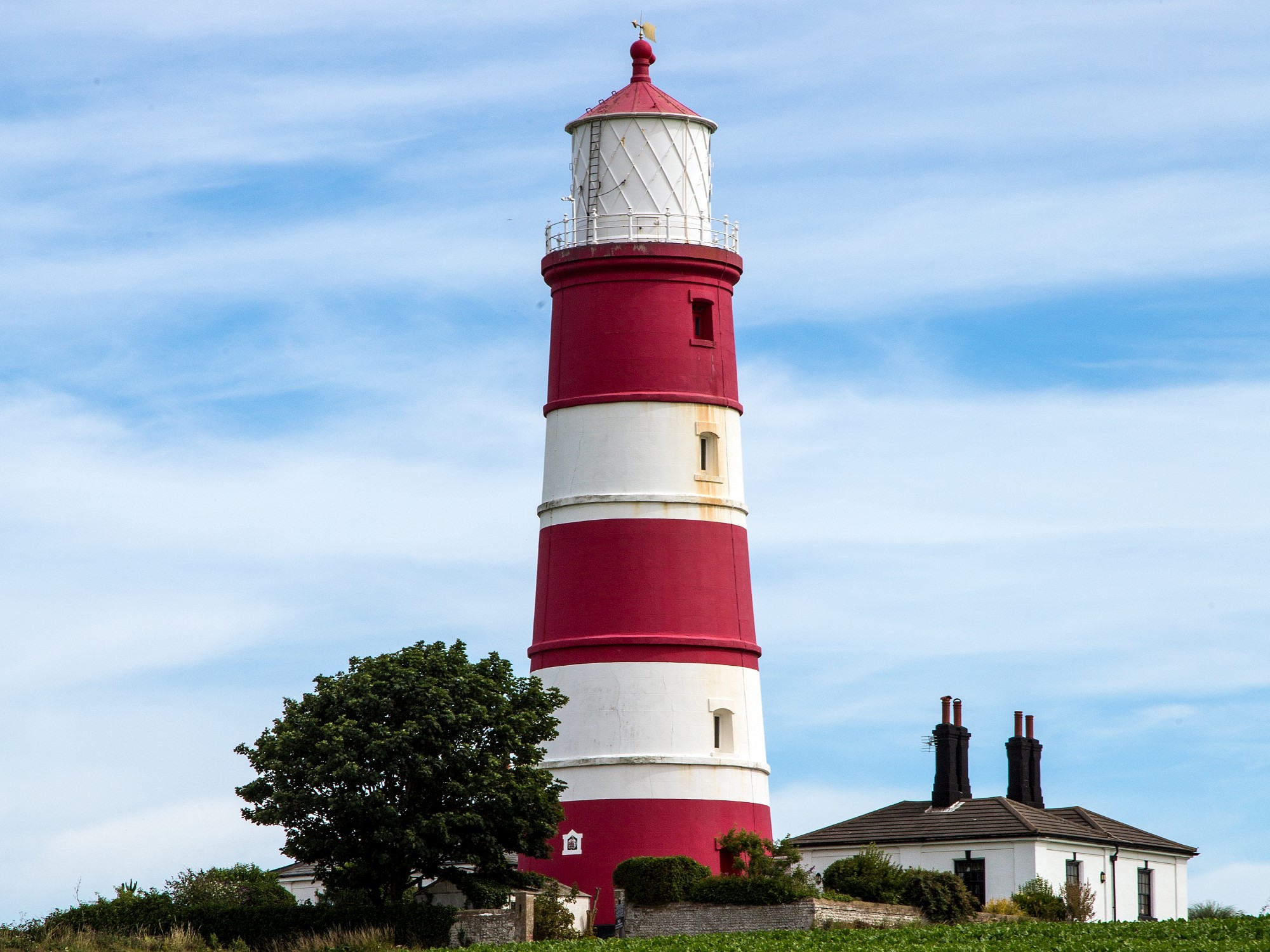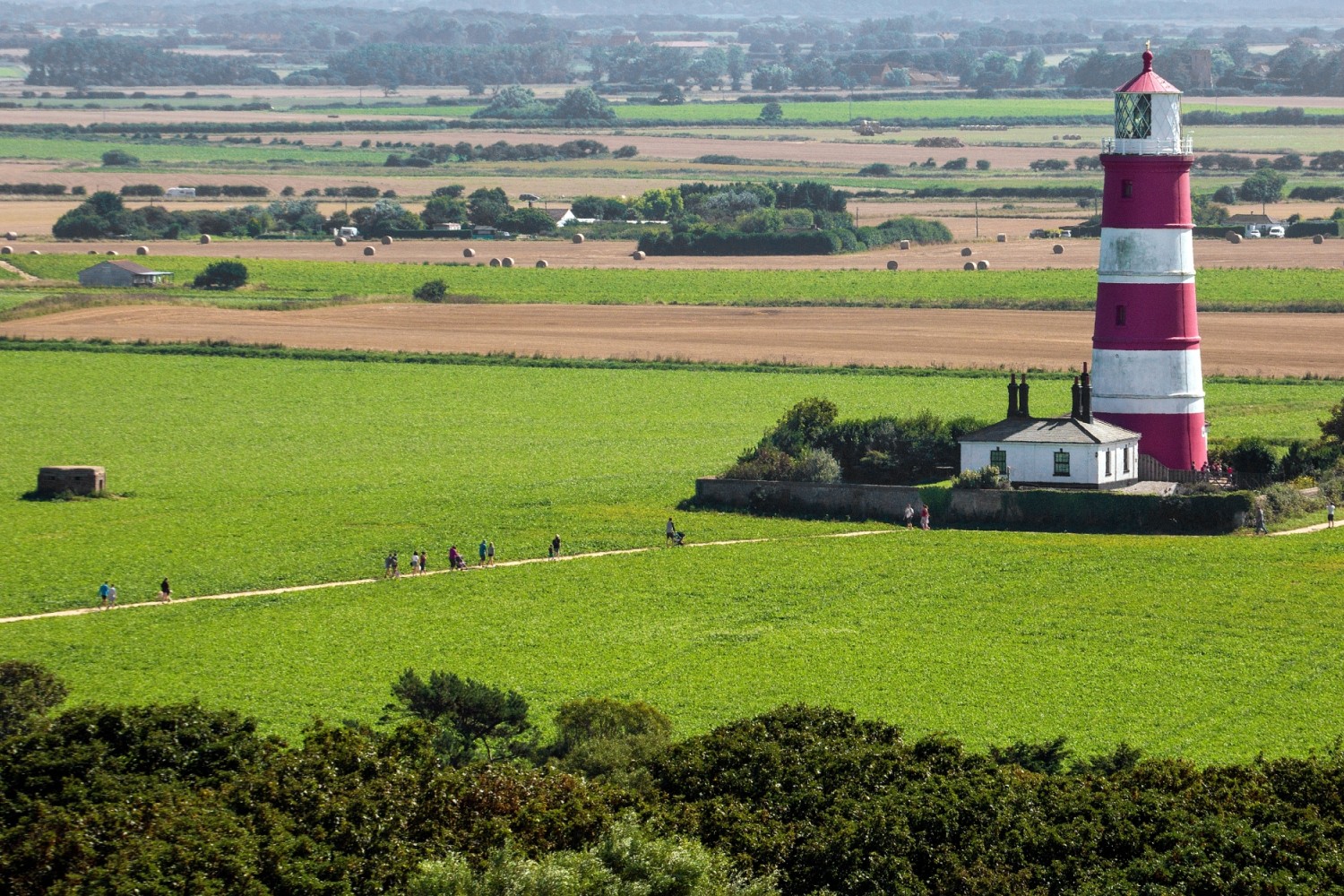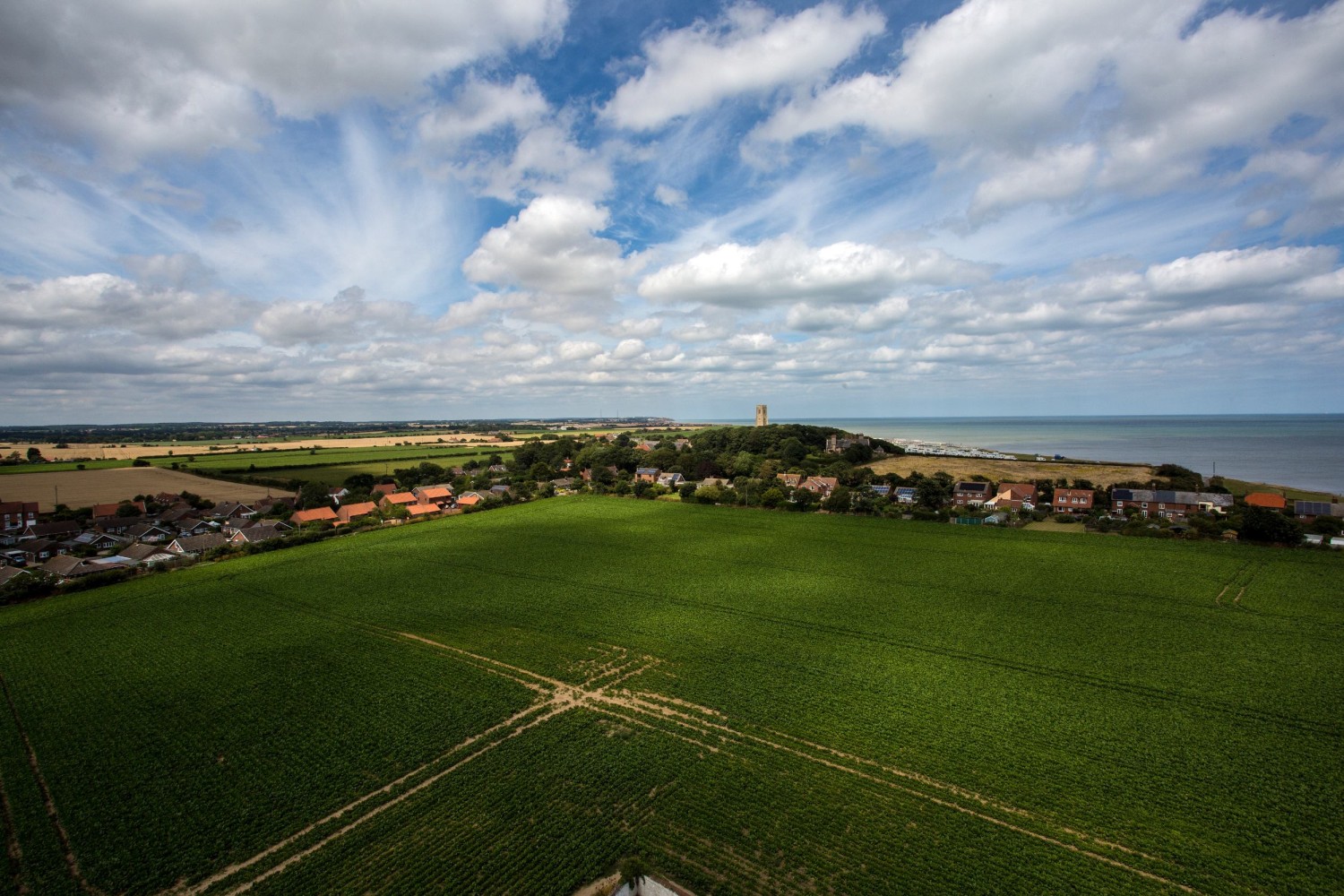
Resilience in red and white
Revealing the remarkable story of the lighthouse that refused to go dark
Rising above the windswept shores of North Norfolk, Happisburgh Lighthouse stands as a majestic and enduring landmark. Whether silhouetted against stormy skies or glowing beneath golden sunsets, its red and white bands symbolise heroism, pride, and perseverance. As the oldest working lighthouse in East Anglia, it has saved countless lives, withstood decades of change, and continues to serve as a guiding light for its community.
The story of Happisburgh Lighthouse began in tragedy. In 1789, fierce winter storms battered the North Norfolk coast, wrecking over 70 sailing ships and claiming the lives of 600 men. These disasters highlighted the urgent need for a solution to assist mariners navigating the Haisborough Sands, a notorious stretch of shifting shoals that had already doomed numerous vessels. A public inquiry determined such devastating losses could have been avoided if there were more warning lights between the candle-powered light at Winterton and the fire beacon at Cromer. The local community petitioned Trinity House, the authority responsible for Britain’s lighthouses, leading to the construction of two towers at Happisburgh: the 65ft Low Light on the cliff top and the 85ft High Light 400 yards inland.
Both lighthouses began service on New Year’s Day in 1791, casting fixed, constant beams from dusk until dawn. Their illumination came from Argand oil lamps, renowned for their bright and reliable flames, with each tower housing 13 lamps positioned before polished reflectors. Through murky nights and raging storms, the twin beacons stood as symbols of hope, steering mariners away from treacherous rocks and toward safer waters.
As lighthouse technology evolved, Happisburgh kept pace with the latest advancements. In 1868, a revolutionary new lantern design was installed, replacing the topmost section of each tower with a diagonally-framed glass structure, allowing ships to see the light from all angles at sea. Alongside this upgrade, the Chance Brothers’ newly manufactured optic was fitted, replacing the outdated Argand lamp system with a single multi-wick lamp and a powerful first-order catadioptric fixed lens. This further enhanced visibility, extending the High Light’s range to 17 miles and the Low Light’s range to 15 miles.
In 1872, Happisburgh was selected as a test site for coal gas lighting, with trials comparing a Douglass 4-wick oil lamp (displayed from the Low Lighthouse) and a Wigham 108-jet gas lamp (displayed from the High Lighthouse). Though the results were inconclusive, the High Light retained gas lighting for several decades before transitioning to paraffin-vapour burners. Despite technological advancements, natural forces continued to shape Happisburgh’s fate. Coastal erosion led to the decommissioning of the Low Lighthouse in 1883 and its demolition in 1884. With only the High Lighthouse remaining, its beam was modified to an occulting character to distinguish it from Winterton’s fixed light, featuring 25 seconds of illumination followed by a 5-second eclipse. To further differentiate it during the daytime, the tower was adorned with bold red bands, creating the iconic look that defines it today.

By 1929, Happisburgh Lighthouse underwent another significant transformation with the introduction of acetylene, a self-regulating lighting fuel that eliminated the need for resident keepers. In 1947, the lighthouse was electrified and given a new group flashing characteristic, emitting three bright flashes every 30 seconds. By the late 1980s, advancements in modern navigational technology led Trinity House to reduce the number of traditional lighthouses, deeming Happisburgh one of five beacons to be made redundant. Decommissioning was planned for June 1988, but the looming prospect of extinguishing a beacon that had shone for nearly two centuries galvanised the local community into action. Recognising the ongoing dangers of the Haisborough Sands, local marine geophysicist Kay Swann spearheaded a campaign to save the lighthouse, organising a petition that garnered over 15,000 signatures and prompting the formation of the Friends of Happisburgh Lighthouse group. Trinity House agreed to postpone the closure, but under the Merchant Shipping Act of 1894, it could only transfer a working lighthouse to an Established Lighthouse Authority. The community intensified fundraising efforts, securing £15,000 to promote a Private Bill through Parliament. Much to their delight, the bill received Royal Assent in April 1990, leading to the establishment of the Happisburgh Lighthouse Trust as a local light authority and making Happisburgh the only independently operated working lighthouse in Great Britain. “We are very passionate about our lighthouse and have a wonderful team of volunteers who help to keep the light shining,” states proud Lighthouse Trust Secretary Joy Tubby, who, along with her husband Patrick, has been involved with safeguarding the beacon since the campaign’s inception. “Its red and white bands make it one of the most recognizable buildings in Norfolk, and we believe it to be the third oldest lighthouse tower in the UK still showing a navigation light!”
Today, Happisburgh Lighthouse stands as a symbol of resilience, maintained by the Trust and its dedicated community. Public open days, private visits, membership contributions, and donations keep it aglow, while supporters who help with painting, polishing, and repairs ensure the tower stays in pristine condition.
“What stands out most about the lighthouse is the awe and community spirit it generates. The whole village rallied together to save it, our volunteers are proud of its heritage, and visitors are always enthralled by the wonders it holds,” Joy adds. “When we took over the lighthouse in 1990, we aimed to preserve it for local yachtsmen and fishermen. 35 years on, its role has changed with the development of GPS and electronic aids, yet it remains an essential reassurance should something go wrong. We love that our lighthouse has watched over the village for over 200 years, and we will strive to keep its beam shining for many more!” Visit www.happisburgh.org.uk/lighthouse to join the Friends of Happisburgh Lighthouse or learn more about visiting and volunteering opportunities.

